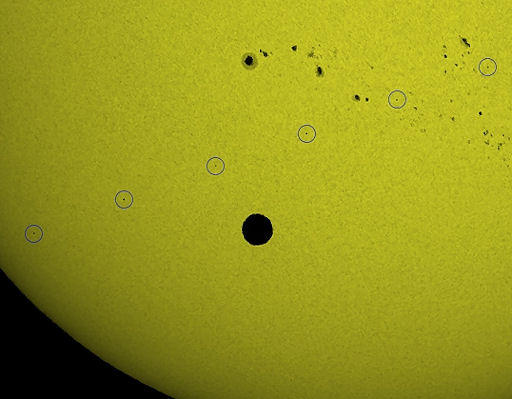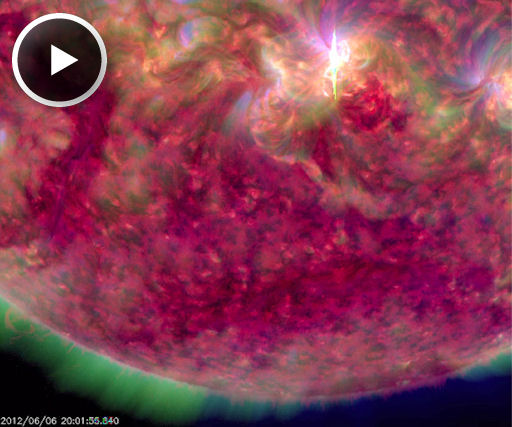Hubble Transit of VenusFriday, Jun. 8, 2012 |
12
|
|||
| What's up in space | ||||
SOLAR
WIND: For the third day in a row,
a stream of fast solar wind is buffeting Earth's
magnetic field. NOAA forecasters estimate a 40%
chance of geomagnetic storms around the poles on
June 7th. Magnetic
storm alerts: text,
voice.
HUBBLE
TRANSIT OF VENUS: One of the big
ironies of the 2012 Transit of Venus was that
NASA's greatest telescope didn't dare photograph
the event. Hubble's instruments are so sensitive,
one look at the glaring sun would have crippled
its instruments. Nevertheless, Hubble managed
to join the show. Astrophotographer Theirry Legault
caught the observatory flitting in front of the
sun alongside Venus:
"I was in north-east Australia
for the full transit of Venus and a transit of
Hubble in the middle," says Legault. "My
Nikon D4 digital camera was working at 10 fps
on a Takahashi FSQ-106ED telescope to record 9
images of HST during its 0.9s transit."
This is certainly an historic photo.
Imagine what
James Cook would think of a telescope in space
crossing his field of view as he watched the transit
of 1769 from a beach in Tahiti. Moreover, imagine
what kind of telescopes will be crossing the sun
when the next Transit of Venus occurs in 2117.
Congratulations to Legault for capturing a truly
rare 0.9s slice of history.
More slices of history may be found
in the Transit of Venus Photo Gallery:
Realtime
Transit of Venus Photo Gallery
[Submit your photos] [NASA videos: 2012 Transit of Venus, ISS Transit of Venus]
Transit of Venus Web Links:
CHANCE
OF FLARES: The odds of a significant
solar flare are improving as three sunspots develop
complex magnetic fields with energy for M-class
eruptions. NASA's Solar Dynamics Observatory recorded
this extreme ultraviolet flash (category M3) from
sunspot AR1494 on June 6th:
The impulsive flare hurled a coronal
mass ejection into spacce, but not directly toward
Earth. The cloud should sail mostly south of our
planet on June 8-9.
|




No hay comentarios:
Publicar un comentario